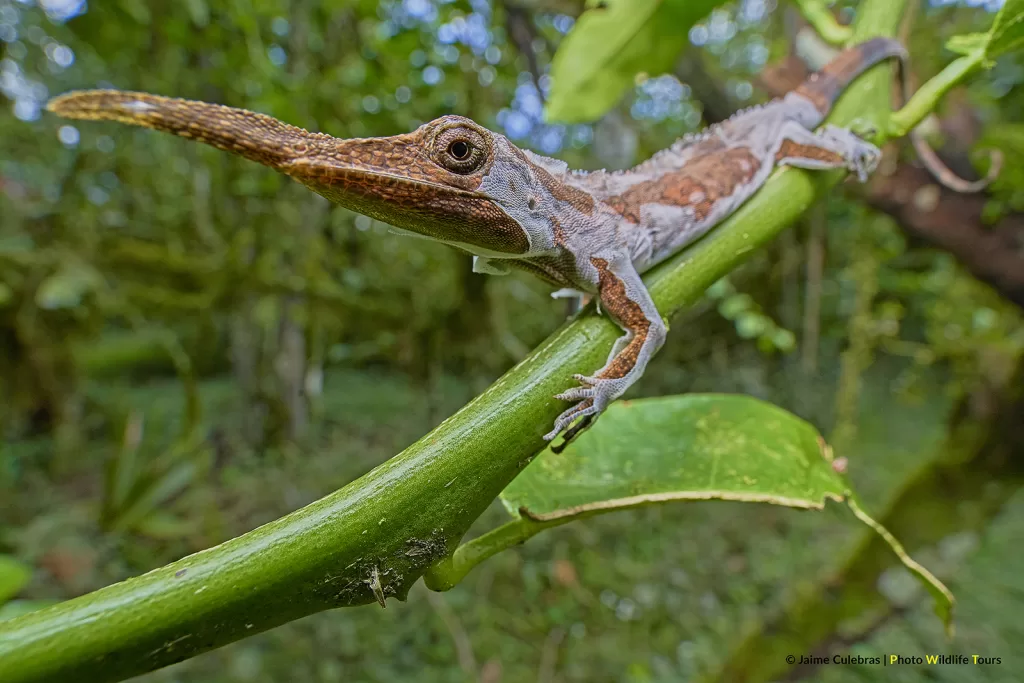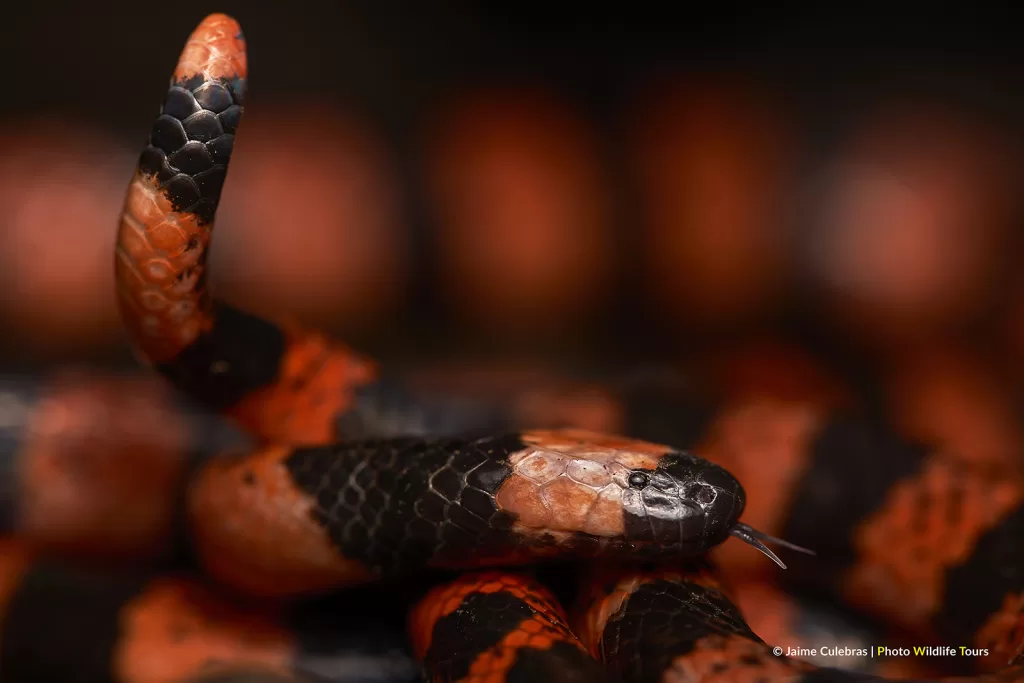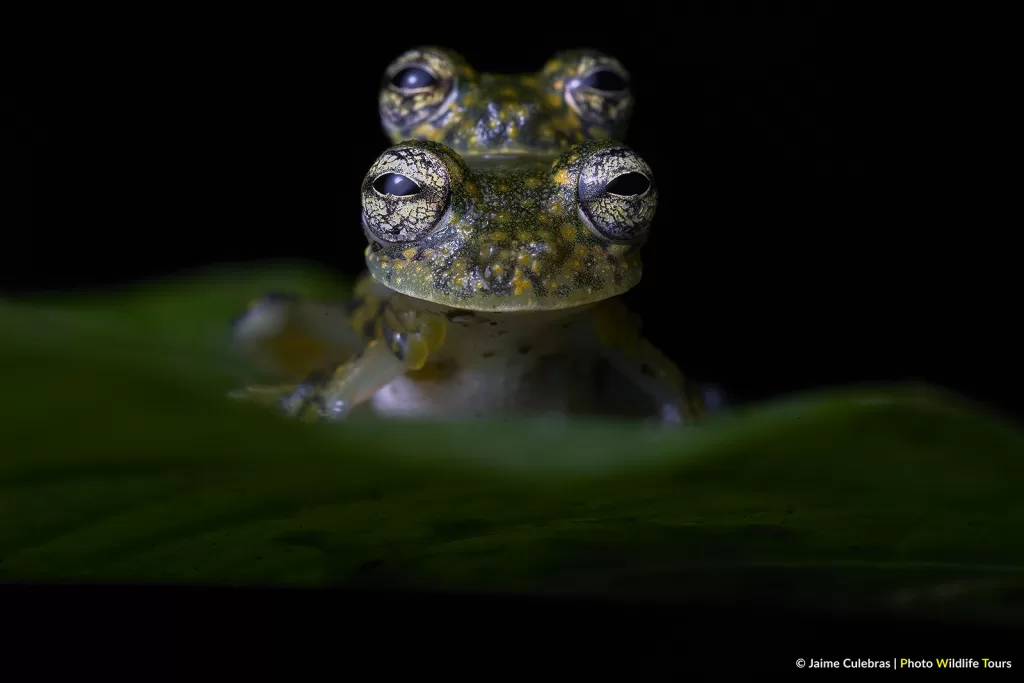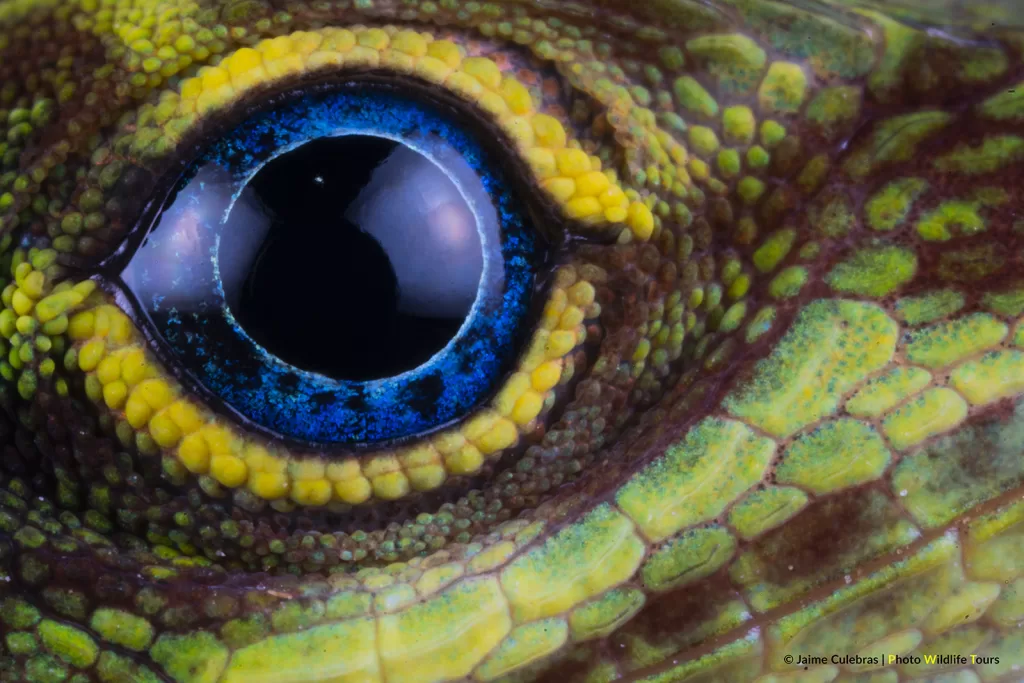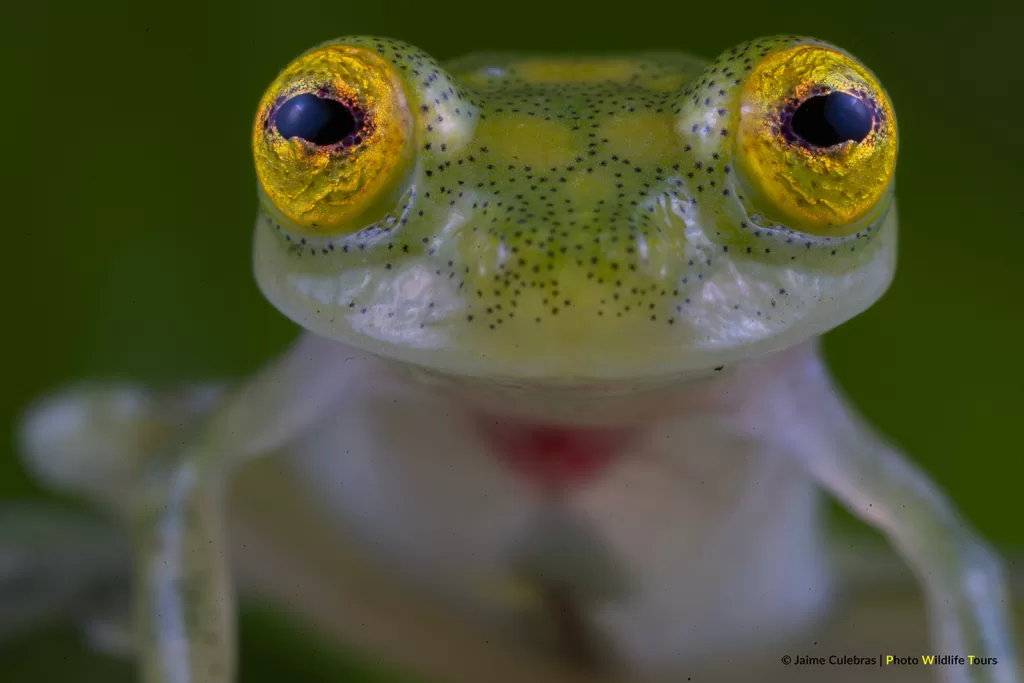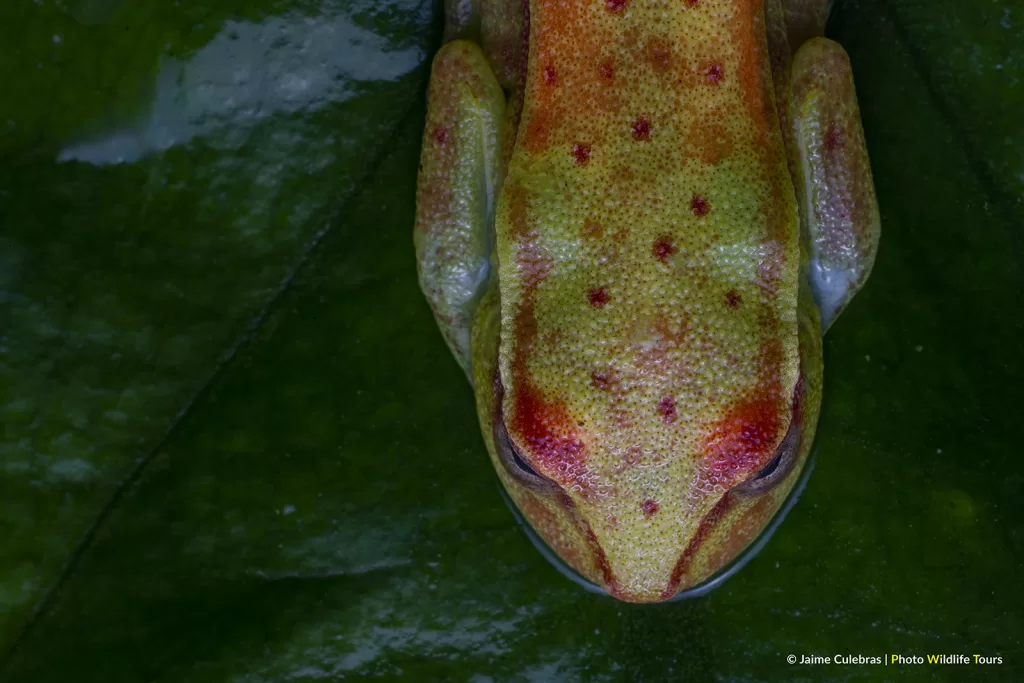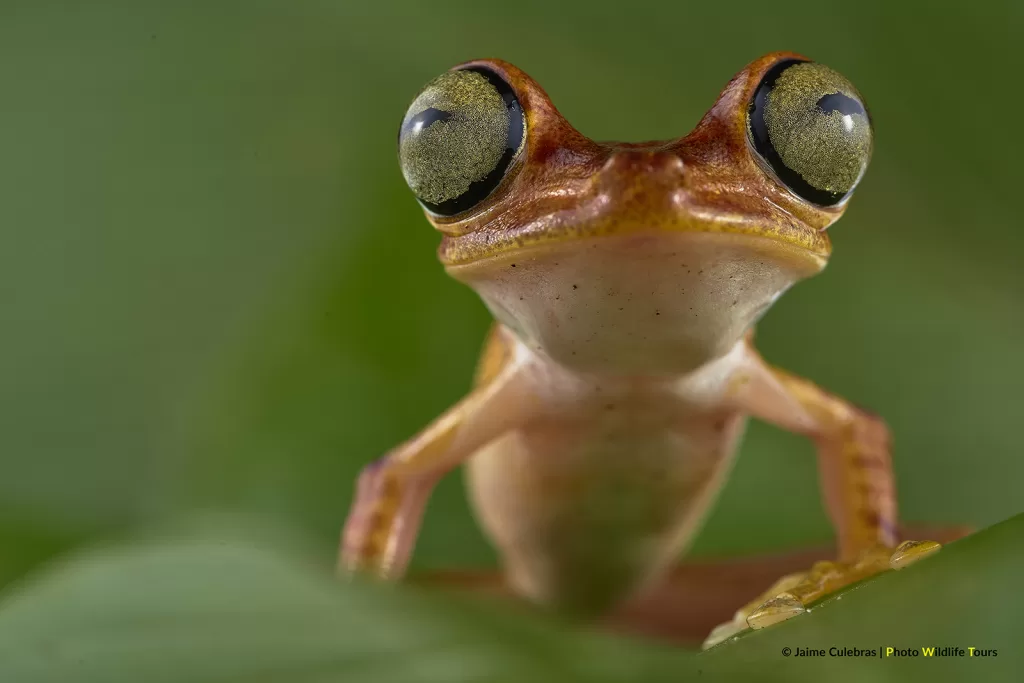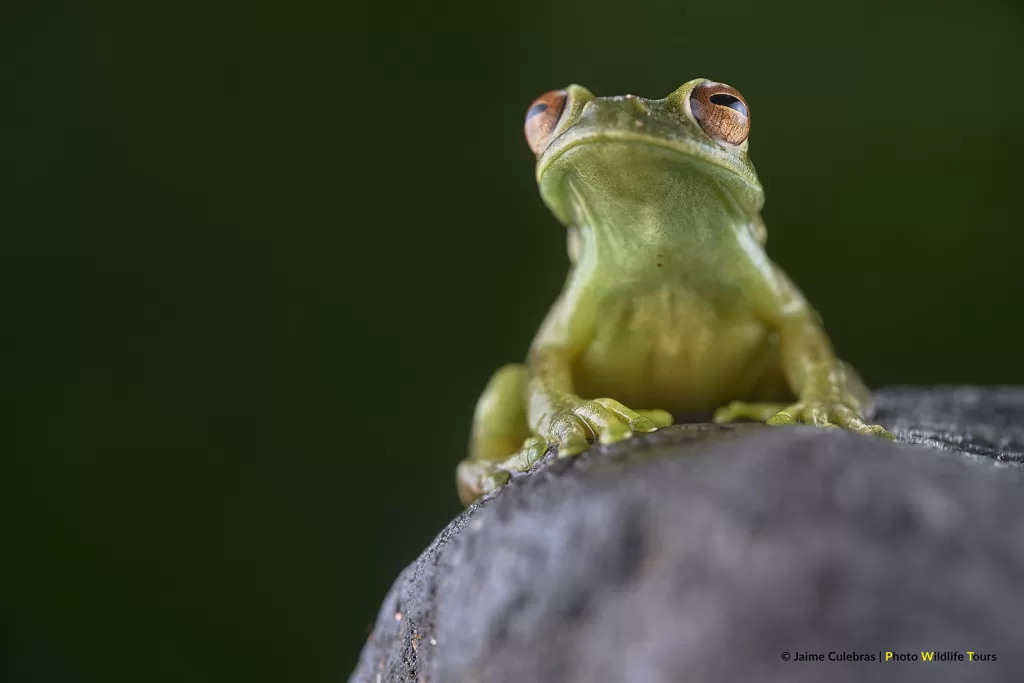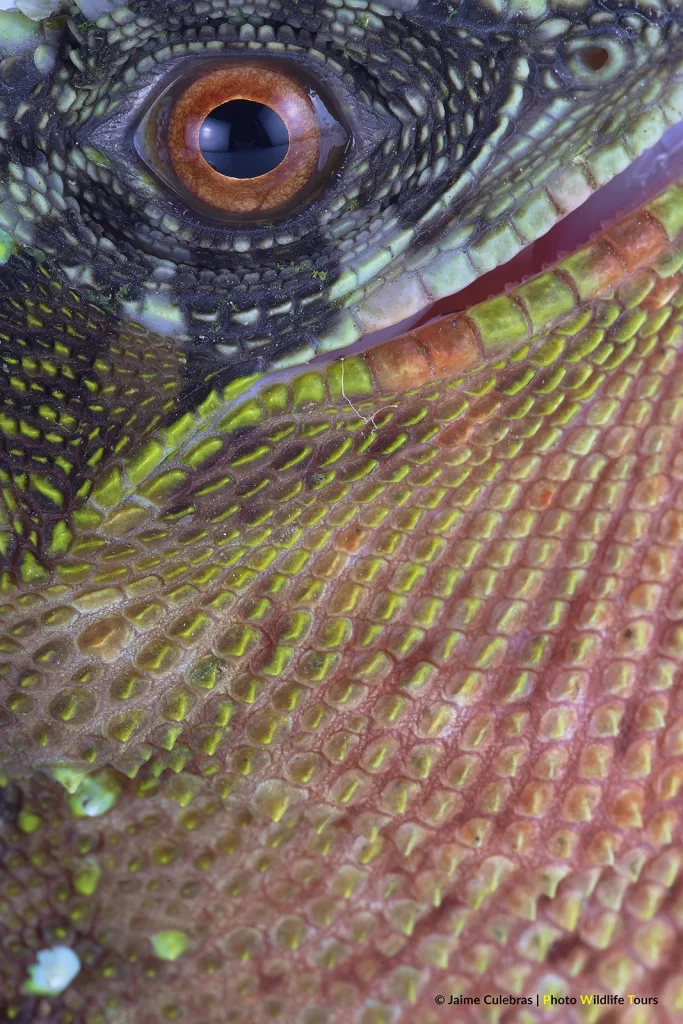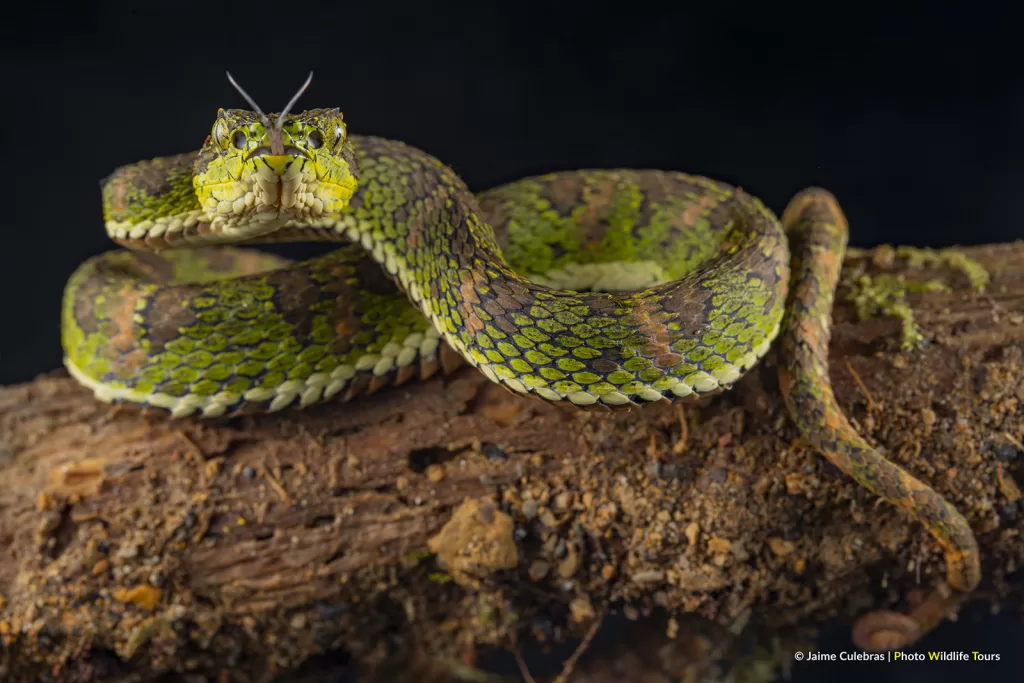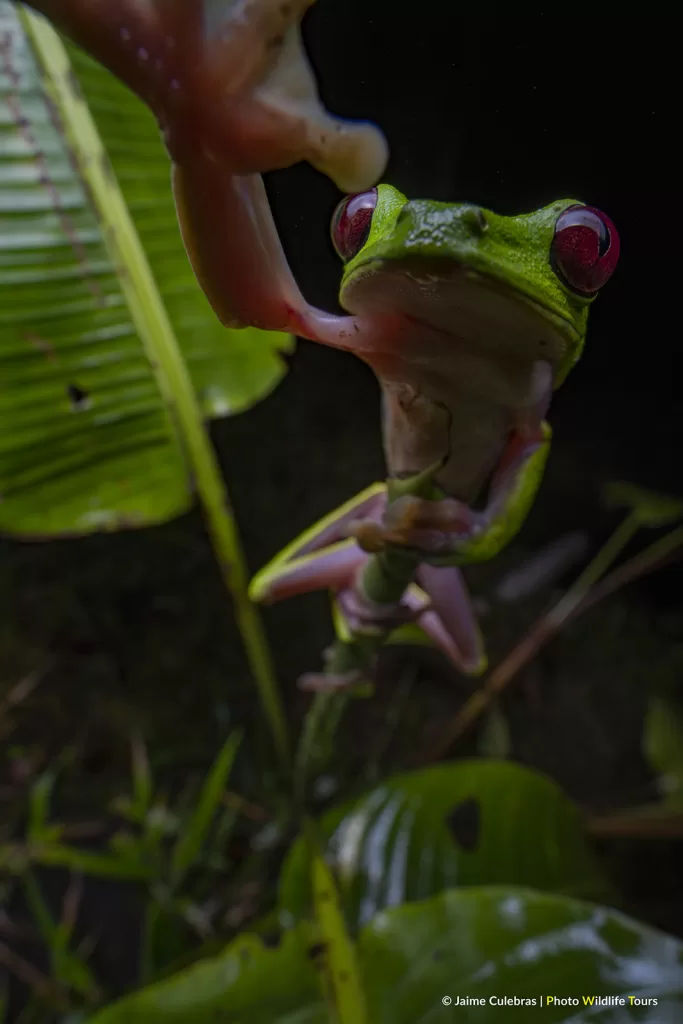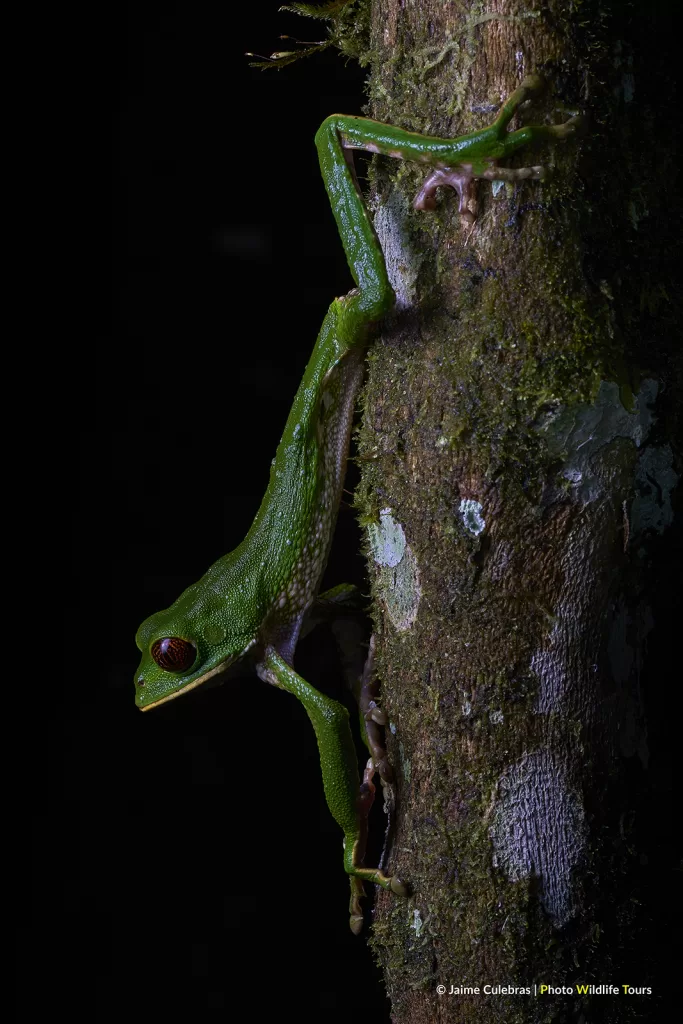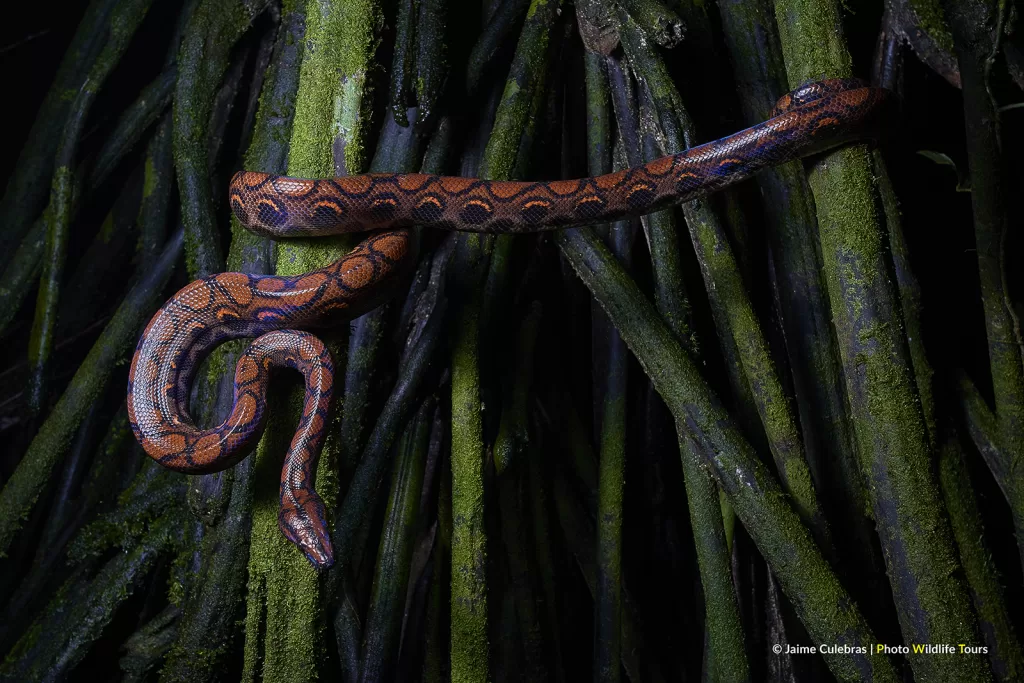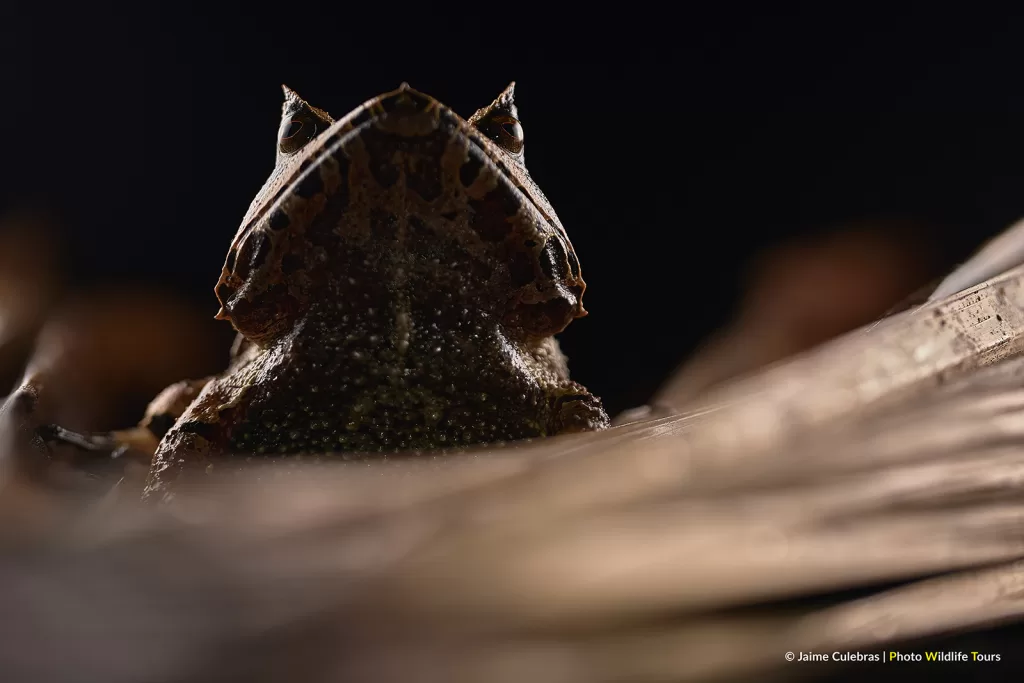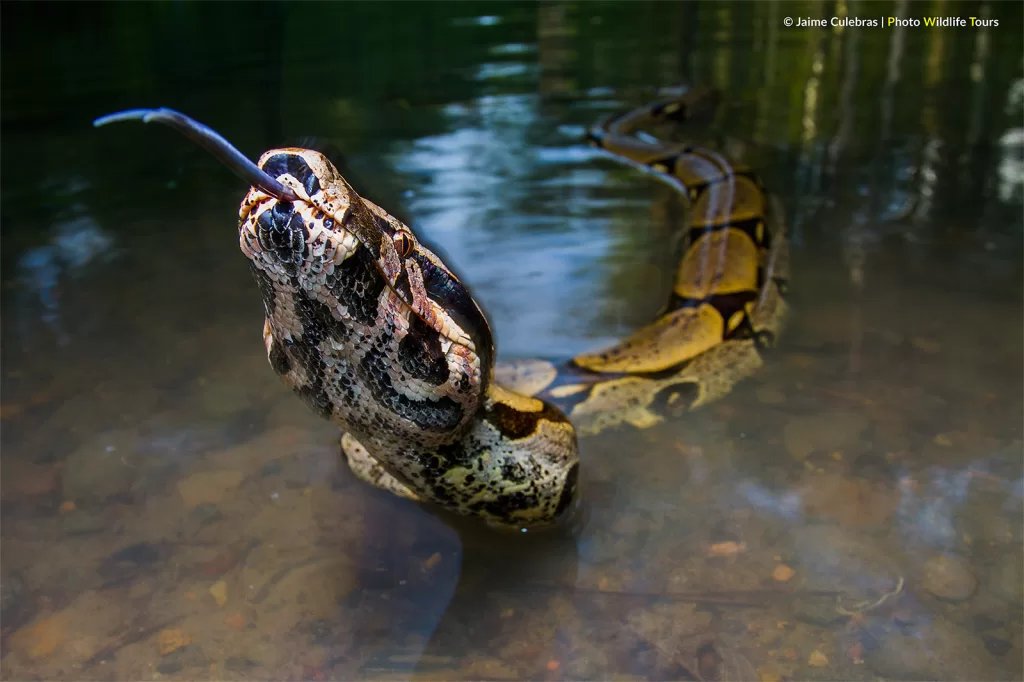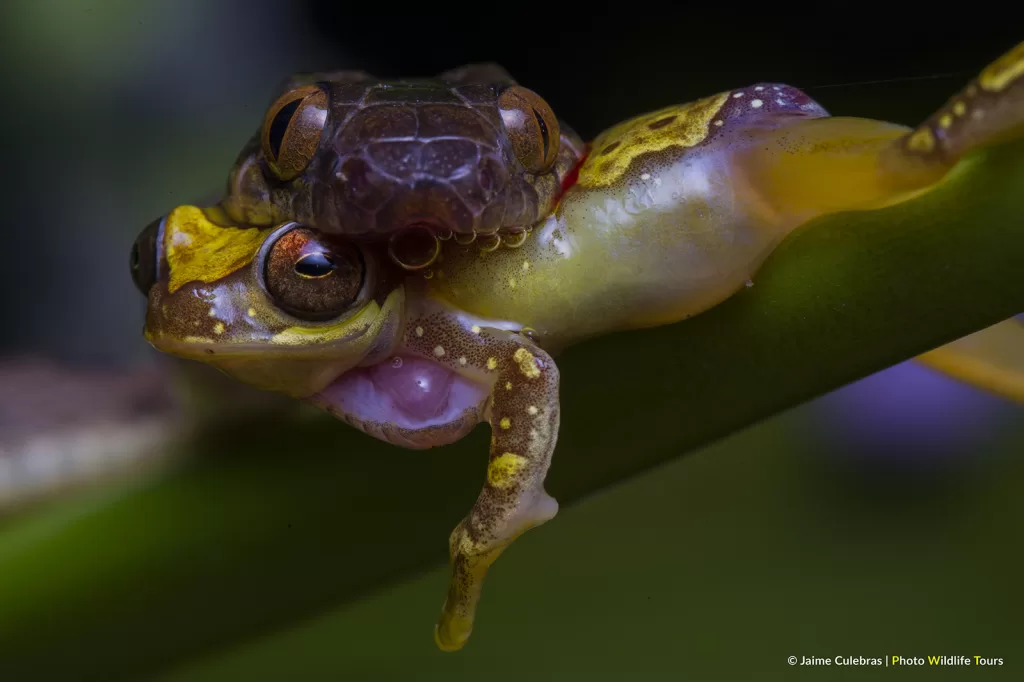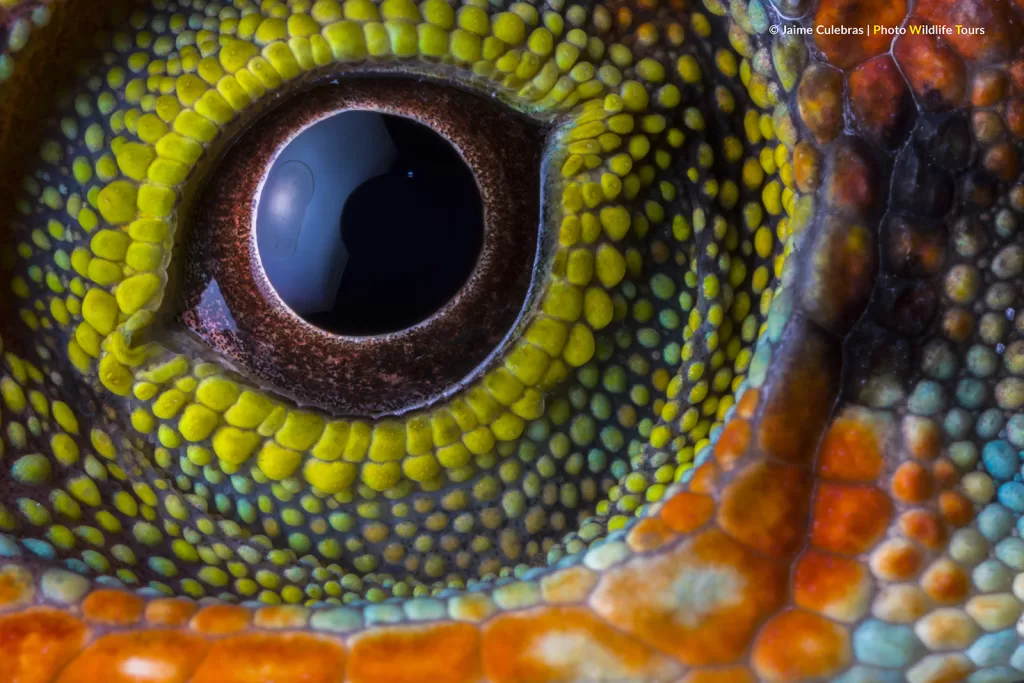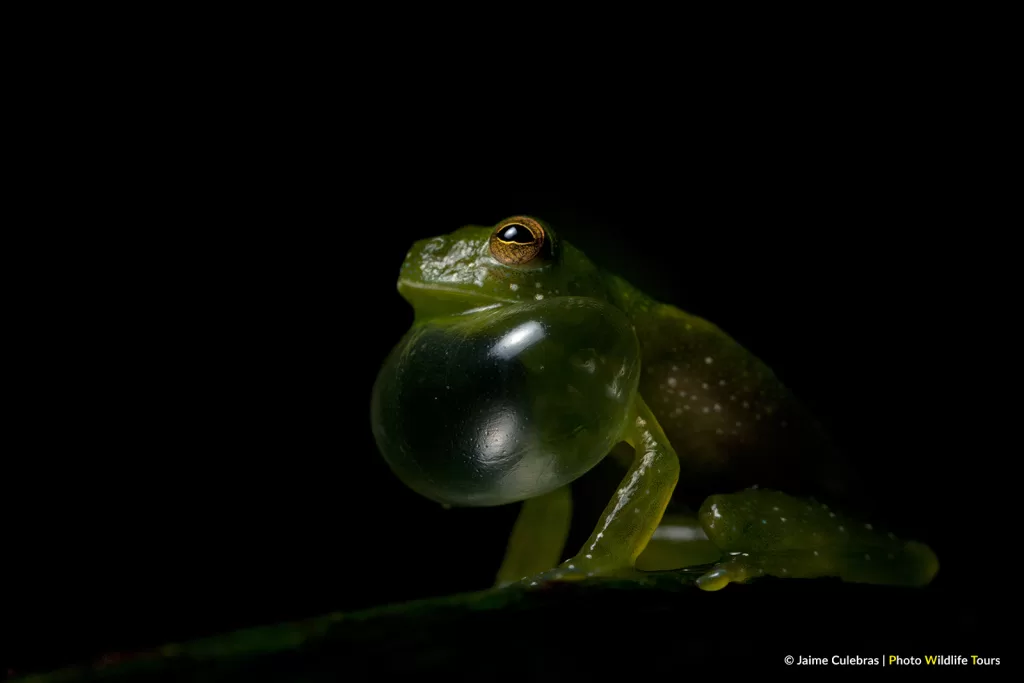Full Ecuador Herping Tour
Scroll down
About the Tour
Ecuador stands out as one of the world’s most diverse countries in terms of herpetofauna (amphibians and reptiles). Over 500 reptile species and 650 amphibian species inhabit various ecosystems, from the Pacific coastal influence to the Amazon, crossing the majestic Andes Mountains.
Our tour offers you the opportunity to immerse yourself in a visual and auditory feast in the Amazon, the Chocó, and the cloud forests of the Tropical Andes, a region with numerous endemic species (found only here).
In these settings, we will search for these treasures whose scaly and moist skins allow us to maximize our photography skills while learning about their ecology.
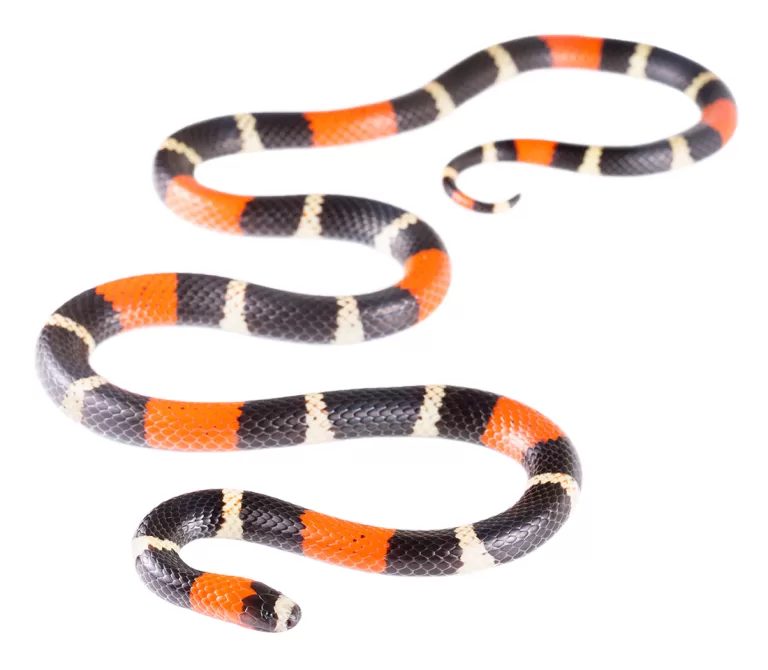
Date
All year
Activity level
Available spaces
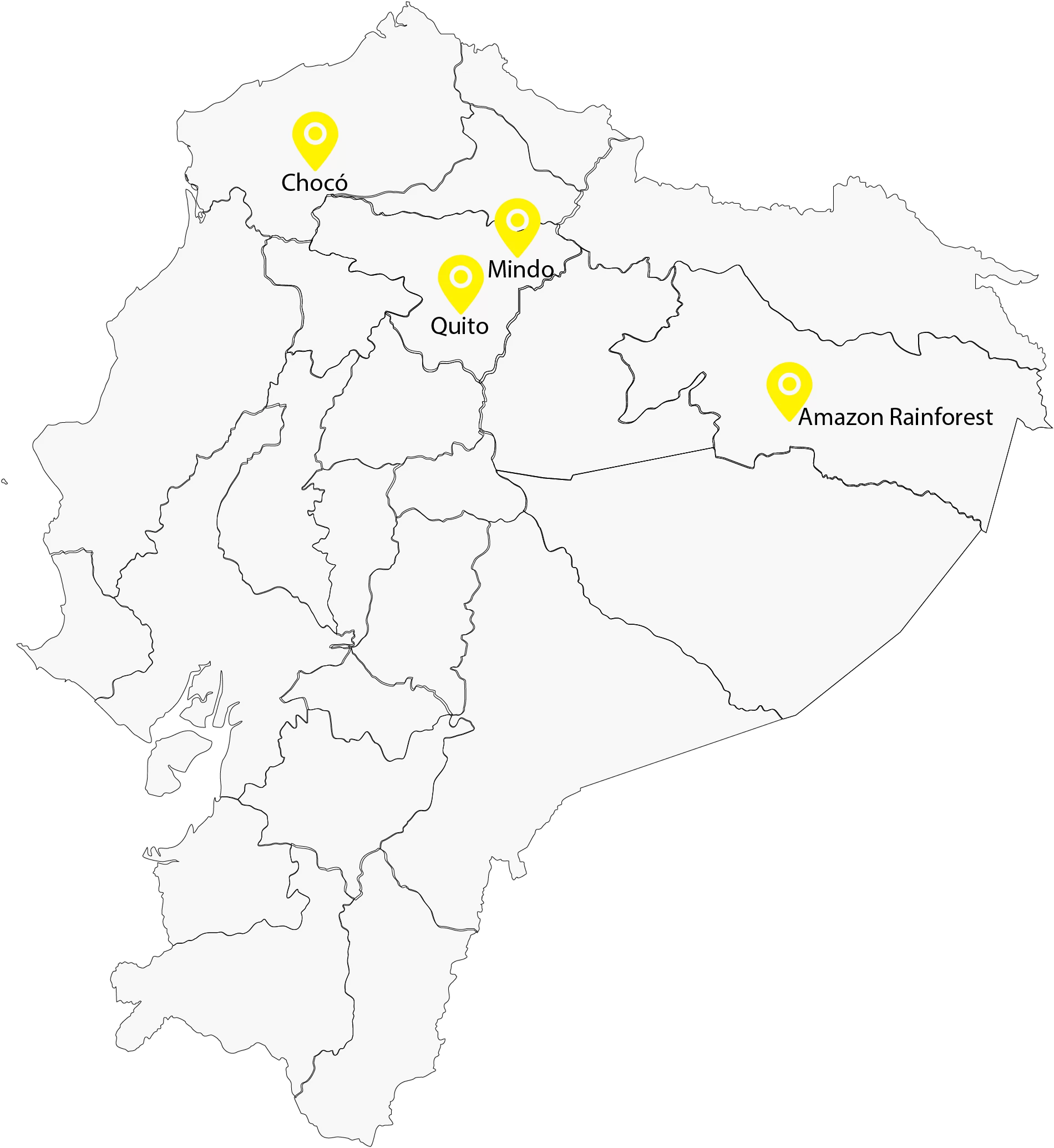
Itinerary
Day 1 | Welcome to Ecuador
Today, we will arrive at our hotel located in the Puembo Valley, near the Mariscal Sucre International Airport and Quito, the capital city.
In the evening, we will have a welcome dinner where participants will meet, introduce themselves, and attend a brief meeting about the activities planned for the upcoming days.
Day 2 | Heading to the Amazon
In a flight of approximately 45 minutes, we will travel from Quito to Coca (Francisco de Orellana), crossing the eastern Andes.
In Coca, we will board comfortable covered canoes. During the less-than-two-hour journey, we will enjoy the beautiful view of the Napo River basin and occasional animal sightings. We will then arrive at a small river where, after a 10-minute journey, we will disembark at our home for the next few days—a beautiful and comfortable lodge surrounded by forest canopy and a nearby river. Upon arrival, visitors are warmly greeted with a refreshing drink and a briefing before being guided to their cabins.
After lunch, we will rest, enjoy our accommodations, and familiarize ourselves with the surroundings while discussing our goals for the following days.
After dinner, we will prepare our boots, flashlights, and cameras for the first night of herping. While visiting flooded areas, we will search for and photograph various frogs, such as monkey frogs (Phyllomedusa vaillanti, Phyllomedusa tarsius), milk frogs (Sphaenorhynchus lacteus), and clown frogs like Dendropsophus reticulatus. With luck, we might encounter a Pipa pipa. Additionally, lizards such as Anolis or dwarf iguanas (Enyalioides laticeps) might be found resting on branches and leaves, while snakes like the rainbow boa, Amazon tree boa, coral snakes (Micrurus surinamensis), or vipers like the Amazonian lancehead (Bothrops atrox) or the green parrot snake (Bothrops bilineatus) might appear.
Days 3–5 | In the Amazon
These days will include relaxing daytime activities like visiting lagoons, walking through the jungle, canoeing, and birdwatching. We might see monkeys, toucans, sloths, and various herpetofauna, such as the poisonous frog Ameerega bilinguis. Sunbathing snakes, like Chonta snakes (Chironius sp.), and Dracaena guianensis resting on branches by the water, especially on sunny days, are common sights. If we are fortunate, we might spot a green anaconda (Eunectes murinus) near the rivers and lagoons we visit. Our main efforts will focus on nighttime activities when reptile and amphibian life flourishes. We hope to find the Amazonian leaf frog (Cruziohyla craspedopus).
Day 6 | To the Western Cloud Forest
We will leave the hotel early and travel 10 minutes to the Napo River. In less than two hours, we will reach the port in Coca. The return flight from Coca to Quito will be scheduled according to the airline’s arrangements.
Upon arriving in Quito, we will head to Mindo, about two hours away. On the way, we will stop at a site with a great diversity of hummingbirds (up to 23 species have been recorded). Orioles and colorful tanagers occasionally visit the feeders. We will continue to our lodge, where, after a warm welcome and lunch, we will head to our rooms for a rest. The lodge offers cozy spaces for birdwatching while waiting for the night. After dinner, we will search for lizards like Anolis equatorialis and Anolis gemmosus, yellow male clown frogs (Dendropsophus carnifex), torrent frogs (Hyloscirtus alytolylax), and, with luck, the Pinocchio lizard (Anolis proboscis) or glass frogs like Nymphargus grandisonae and Espadarana prosoblepon. While rare, snakes like Bothriechis schlegelii, Bothrops osbornei, or Bothrocophias campbelli inhabit these forests.
Day 7 | Mindo
Early risers can visit a hide where Masked trogon (Trogon personatus), Rufous motmot (Baryphthengus martii), Barred forest falcon (Micrastur ruficollis), and Long-wattled umbrellabird (Cephalopterus penduliger) might appear.
After breakfast, we will visit a reserve to see Plate-billed mountain toucan (Andigena laminirostris), Toucan barbet (Semnornis ramphastinus), and numerous hummingbirds and tanagers.
At night, we will search for dwarf lizards (Enyalioides oshaughnessyi), glass frogs, snakes, and other species, including the torrent frog (Hyloscirtus mashpi), discovered in 2015.
Day 8 | To the Chocó
After breakfast, we will travel 4–5 hours to a lodge nestled between the Tropical Andes and the Chocó rainforest. This well-preserved area is a refuge for coastal Ecuadorian herpetofauna. We will explore the new ecosystem after dinner to find species like the pygmy boa (Tropidophis boulengeri), Palm tree frogs (Boana pellucens), and other endemic species.
Days 9–10 | Chocó Rainforest
We will walk the forest during the day to search for anoles, snakes, and other creatures. At night, we will focus on nocturnal herping to find species like lanceheads, vipers, and coral snakes.
Day 11 | Return to Quito
We will visit the Jambatu Center for Amphibian Research and Conservation before returning to our hotel.
Day 12 | Departure
After a farewell dinner, it’s time to say goodbye and hope to meet again on another adventure.
Featured sightings
Included
- Accommodation
- Meals in the itinerary
- Expert herpetologist guide
- Domestic flights (Quito–Coca–Quito)
- Private and river transport
- Reserve entrance fees
Not included
- International flights
- Alcoholic drinks and snacks
- Laundry
- Personal expenses
- Travel insurance
- Tips
General tips
To ensure a better experience, it’s important to keep in mind some key factors that will make your stay in Ecuador more enjoyable:
- If you like bringing back souvenirs, we recommend carrying extra money to purchase items in the various locations we will visit (Ecuador’s currency is the US dollar). It’s advisable to carry small bills or coins, as most places do not accept $50 or $100 bills.
- In tropical areas, there are mosquitoes, so insect repellent is essential.
- Sunscreen.
- Hat or cap.
- Flashlight (preferably a headlamp).
- Fabric bag to store wet clothes.
- Water bottle.
Photographic equipment
As photographers, we know how challenging it can be to decide what gear to bring on trips—we always want to pack everything to make the most of the experience. Below are our recommendations for what equipment to bring:
- Macro lens.
- Wide-angle macro lens (15mm or 24mm).
- Rain cover for your equipment.
- Tripod.
- Flashes.
- Diffusers.
- Batteries.
- Battery charger.
- Cleaning kit.
- Plug adapter for international chargers (Ecuador uses Type A and Type B plugs with 110V).
Clothing
Amazon Region
The Amazon region is warm and humid, with temperatures ranging between 23°C and 30°C (73°F to 86°F). We recommend bringing long pants, long-sleeved shirts or lightweight tops that help with breathability while keeping pesky mosquitoes at bay.
Mindo Cloud Forest
Mindo, located between 1,200 and 1,800 meters (3,900–5,900 feet) above sea level, has a cool and humid climate. Temperatures range from 15°C to 25°C (59°F to 77°F), with a high probability of rain, especially in the afternoons. Bring waterproof clothing or a good poncho, along with comfortable, non-slip shoes for walking on slippery trails. A light jacket may also be useful for cool mornings and evenings.
Chocó Region (Coastal)
This coastal region is warm and humid, with temperatures ranging from 23°C to 28°C (73°F to 82°F). During the rainy season, which runs from December to May, rain is frequent, and conditions can become muddy. Pack lightweight clothing, long pants to avoid insect bites, and waterproof footwear.
tour leader
He graduated in advertising career at the San Francisco de Quito University.
He worked on his career until 2017, since then he made the decision to live from his passion, nature photography. In the same year he started his own business, Photo Wildlife Tours, in which it is dedicated to wildlife photography tours, and conservation. In addition to other audiovisual projects.
In the year 2022 he became the first Ecuadorian to win a category of Wildlife Photographer of the Year, “Animals in their environment”.
Do you need more information?
- 593 98 904 9567
- [email protected]
- Quito - Ecuador
